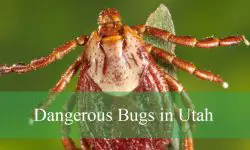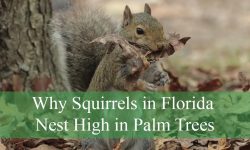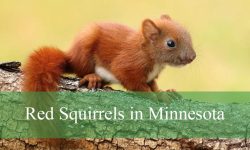Black squirrels are among the most fascinating wildlife creatures in Kansas. With their mysterious dark coats and lively personalities, these rare mammals often capture the attention of both locals and travelers. You might have spotted one darting across your backyard or climbing a maple tree in a Kansas park — and wondered, why are they black? Are they different from regular gray squirrels?
In this article, we’ll explore everything you need to know about black squirrels in Kansas — from their genetic makeup and coloration to their habitats, behaviors, and cultural significance. You’ll also learn how Kansas became one of the states where these striking squirrels are increasingly seen and why scientists and residents alike are intrigued by their presence.
The Science Behind Their Black Coloration

Understanding the Black Coat — The Role of Melanism
The black coloration in squirrels is one of nature’s most intriguing genetic adaptations. This phenomenon, known as melanism, results from a mutation in the gene that controls melanin production — the same pigment responsible for color in human hair, eyes, and skin. In black squirrels, this mutation causes an overproduction of eumelanin, a dark pigment that gives their fur a deep, glossy black hue.
This genetic variation occurs naturally within populations of eastern gray squirrels (Sciurus carolinensis) and fox squirrels (Sciurus niger). Scientists have found that melanism often arises when certain populations are isolated or when darker coloration provides environmental benefits, such as camouflage or better heat absorption.
The Survival Advantage of Melanism in Kansas
Kansas’s diverse climate makes melanism particularly advantageous. In the cold winters of northern Kansas, black squirrels can absorb more heat from sunlight than their gray or red relatives. This allows them to conserve energy and stay active longer during frigid days.
Additionally, in shaded woodlands or areas with dense foliage, the black coat provides excellent camouflage from predators like hawks, owls, and coyotes. This darker pigmentation can also reduce visibility in early morning or late evening light — times when squirrels are most active.
Interestingly, research from several universities, including studies in Canada and the Midwest, suggests that black squirrels might also have stronger immune systems than lighter-colored squirrels. The same gene associated with melanism (the MC1R gene) can influence physiological traits like stress resistance, temperature tolerance, and immunity — giving black squirrels an edge in survival.
How Common Is the Melanism Gene?
While melanism is rare overall, it’s relatively common in Kansas compared to other parts of the U.S. Genetic data show that once the black color gene appears in a localized population — especially one with limited migration — it can become dominant over generations.
In cities like Marysville, Kansas, this is exactly what happened. A few melanistic individuals likely founded the population decades ago, and since they faced no natural disadvantages, their dark trait persisted. Over time, the entire community became home to predominantly black squirrels.
Understanding Black Squirrels
What Are Black Squirrels?
Black squirrels are not a separate species but rather a color morph of the eastern gray squirrel or the fox squirrel. They share the same anatomy, diet, and behaviors as other squirrels but are instantly recognizable by their dark, shimmering coats.
In Kansas, both gray and fox squirrels can produce black offspring, though the fox-squirrel variant is typically larger and may have faint reddish tones around the face or tail. These variations make Kansas one of the most visually diverse states when it comes to squirrel coloration.
The Genetic Mystery Behind Their Color
Scientists believe the melanism gene entered gray squirrel populations thousands of years ago during the Ice Age when darker fur provided better insulation. The gene persisted through generations, occasionally resurfacing in isolated or urbanized populations.
In Kansas, genetic mixing between gray and fox squirrels also contributes to the presence of different shades of black, from pure jet-black to smoky charcoal or brown-tinted fur. This variation often leads locals to believe there are multiple “species” of black squirrels, when in reality, it’s all the result of one powerful pigment mutation.
Black Squirrels in Kansas: A Growing Population
Where Can You Find Them?
In Kansas, black squirrels are most abundant in the northeastern regions, especially in towns like Marysville, Topeka, and Manhattan. Marysville, however, is world-famous for its thriving population and is affectionately known as the “Black Squirrel City.”
These squirrels are frequently seen in parks, backyards, and along tree-lined streets. They adapt well to suburban environments, nesting in attics, trees, and even old buildings. Their growing presence suggests that black squirrels are thriving under Kansas’s mix of natural and urban habitats.
Marysville: The Capital of Black Squirrels
According to local legend, Marysville’s black squirrels descended from a small group that escaped a traveling circus or zoo in the early 1900s. Once freed, they found the area’s oak and hickory trees ideal for nesting and feeding. With no major predators and local admiration, their population boomed.
Today, the city celebrates its beloved black squirrels with murals, mascots, and an annual festival. Marysville residents take pride in their dark-coated friends, and the city even passed an ordinance protecting them from harm or capture — making it a sanctuary for these fascinating creatures.
Behavioral Traits of Black Squirrels
Daily Habits and Lifestyle
Black squirrels are diurnal, meaning they’re active during daylight hours. They typically spend mornings and late afternoons foraging for nuts, seeds, berries, and grains. Their nests, called dreys, are made of twigs, leaves, and moss, usually built high in oak or maple trees.
During winter, they rely on stored food caches buried months earlier. Thanks to their sharp memory and spatial awareness, they can locate these stashes even under thick snow. However, many forgotten nuts eventually germinate, making black squirrels accidental tree planters in Kansas ecosystems.
Interaction with Humans
Kansas residents often describe black squirrels as more fearless and inquisitive than gray ones. While this may be due to individual personality differences, black squirrels in urban areas have certainly adapted to human activity. They can often be seen scavenging around college campuses, public parks, or bird feeders without much hesitation.
Though they sometimes cause mischief — raiding gardens or stealing birdseed — most locals find them entertaining and even charming. Many households in Kansas leave out corn or nuts to support their local black squirrel populations during winter months.
What Do Black Squirrels Eat?
Like other squirrels, black squirrels are omnivorous. Their diet includes nuts (acorns, walnuts, pecans), seeds, fruits, fungi, and occasionally insects or bird eggs. In Kansas farmlands, they’re known to eat corn and grains as well.
In residential areas, they readily consume sunflower seeds from feeders or leftovers from outdoor pet bowls. This opportunistic diet helps them survive year-round, regardless of environmental changes.
Importantly, by burying uneaten nuts and seeds, black squirrels play a crucial role in seed dispersal — helping regenerate Kansas’s forests naturally.
Habitat and Distribution in Kansas
Preferred Environments
Black squirrels prefer environments rich in mature trees and dense canopies. Common habitats include:
- Oak and hickory forests
- Urban parks and gardens
- Riparian zones near rivers
- Residential neighborhoods with tall trees
Kansas’s mix of farmland and woodland provides the perfect habitat balance for these adaptable mammals.
Expansion Across the State
Though once concentrated around Marysville, black squirrels have gradually spread south and east, appearing in Topeka, Kansas City, and even rural counties. Their success is due to a combination of mild winters, human tolerance, and abundant food sources.
Because they interbreed freely with gray or fox squirrels, the melanism gene continues to propagate naturally — ensuring that the striking black morph remains a lasting part of Kansas wildlife.
The Importance of Black Squirrels in Local Ecosystems
Black squirrels are valuable contributors to Kansas’s natural ecosystems. Their seed-burying behavior promotes tree regeneration, while their foraging activities help maintain healthy forest floors. In cities, they even assist in insect control by feeding on larvae and beetles.
Their adaptability also reflects ecosystem health — thriving black squirrel populations indicate a stable environment with sufficient food, nesting sites, and minimal human conflict.
Myths and Cultural Significance
Legends and Folklore
Throughout Kansas history, black squirrels have inspired countless local tales. Some say they bring good fortune; others claim they’re signs of fertile land or upcoming rain. Early settlers considered them rare and mystical, associating their dark coats with wisdom and resilience.
Symbol of Local Pride
Marysville’s black squirrel is more than just a mascot — it’s a cultural icon. The city’s murals, park sculptures, and even local businesses proudly feature the squirrel as a symbol of uniqueness and community identity. Annual events like the “Black Squirrel Celebration” attract tourists eager to experience this local legend firsthand.
Conservation and Protection Efforts
Kansas has taken a compassionate approach toward its black squirrel populations. In Marysville, it is illegal to harm or capture black squirrels. Other Kansas communities, inspired by Marysville’s model, have adopted informal protection practices to encourage coexistence.
Conservationists recommend maintaining oak, walnut, and hickory trees to provide food and shelter. Avoiding pesticides, providing clean water sources, and using squirrel-friendly feeders also help sustain healthy populations.
FAQs About Black Squirrels in Kansas
Are black squirrels a different species?
No. Black squirrels are simply melanistic versions of gray or fox squirrels. They belong to the same species but carry a genetic variation that darkens their fur.
Why are black squirrels common in Kansas?
Kansas offers a favorable mix of climate, habitat, and human tolerance. Towns like Marysville protect black squirrels, allowing their populations to grow naturally.
Do black squirrels behave differently from gray ones?
Not significantly. However, some observers note they appear slightly bolder or more territorial — traits possibly influenced by their success in urban environments.
Is their black color permanent?
Yes. Once a squirrel inherits the melanism gene, its fur remains dark for life. Some may appear lighter in summer due to molting or sun exposure.
Are black squirrels aggressive?
No, they’re not aggressive by nature. They may defend food or nests but generally avoid confrontation and are harmless to humans.
Conclusion
The truth about black squirrels in Kansas lies in their remarkable story of adaptation and genetic wonder. Their jet-black coats are more than a visual oddity — they represent evolution in action, resilience against the elements, and coexistence with humans.
From the scientific marvel of melanism to the cultural pride of Marysville, black squirrels have transformed from local curiosities into cherished icons. Their growing presence reminds Kansans of nature’s ability to adapt, survive, and inspire — proving that sometimes, what sets us apart is exactly what makes us extraordinary.






